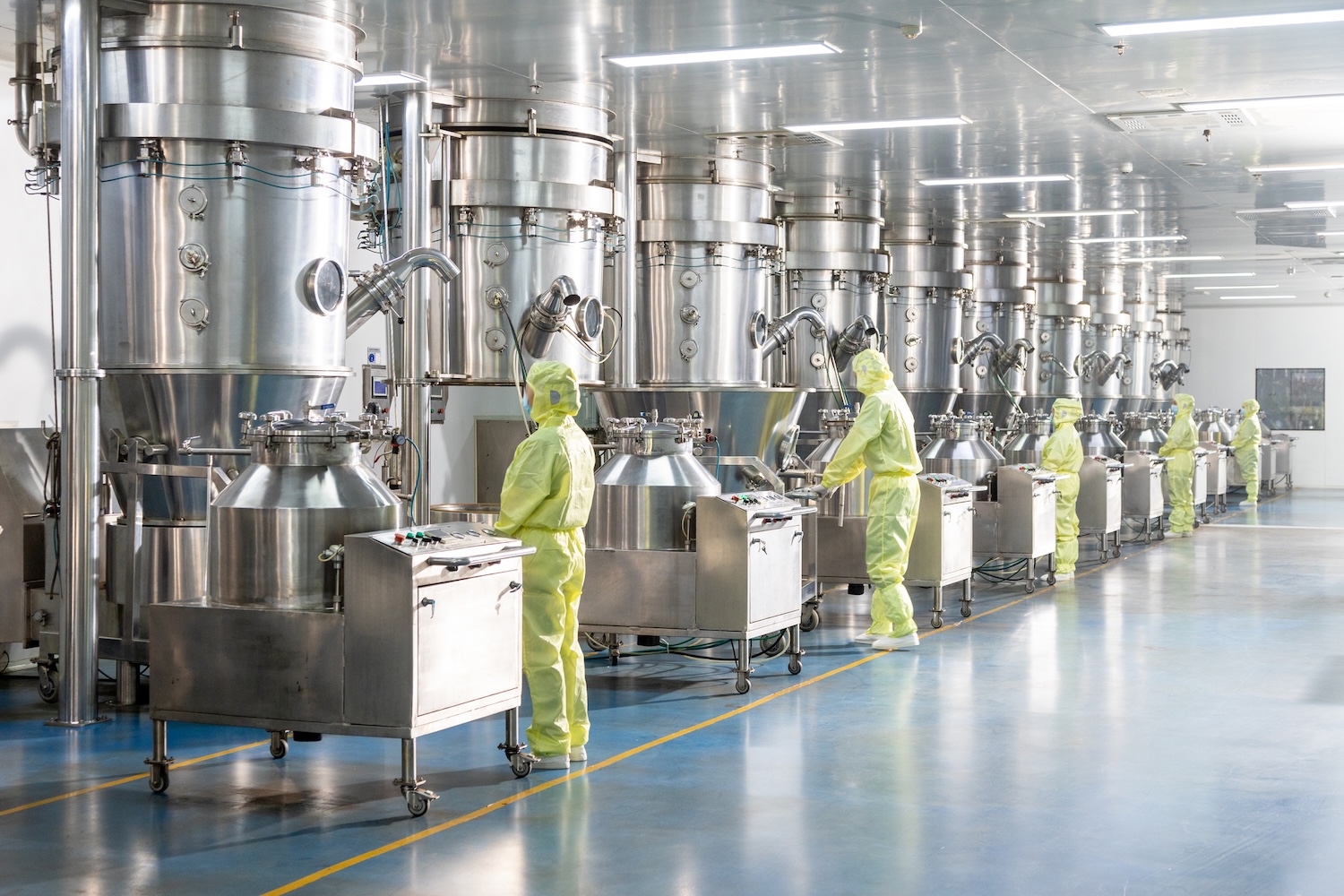Polish pharma goes to court as EU wastewater rules backlash grows – Euractiv

Report on the Legal Challenge to the EU Urban Wastewater Treatment Directive
Introduction: A Conflict in Sustainable Development Goal Implementation
The Republic of Poland, supported by industry representatives, has initiated legal proceedings against the European Union’s revised Urban Wastewater Treatment Directive (UWWTD) at the Court of Justice of the European Union. The complaint alleges that the directive, while aiming to advance key Sustainable Development Goals (SDGs), particularly SDG 6 (Clean Water and Sanitation), fundamentally breaches established EU principles and threatens progress on other critical SDGs, including SDG 3 (Good Health and Well-being) and SDG 9 (Industry, Innovation, and Infrastructure).
Directive Objectives and Alignment with Global Goals
Advancing SDG 6 and SDG 14
The new Directive (EU 2024/3019) is designed to protect environmental and public health, directly contributing to several SDGs. Its primary objectives include:
- Improving Water Quality (SDG 6, Target 6.3): By introducing stricter standards for wastewater treatment, including a mandatory quaternary treatment stage to remove micropollutants.
- Protecting Aquatic Ecosystems (SDG 14): The removal of nitrogen, phosphorus, and other micropollutants aims to reduce pollution in water bodies, supporting the conservation of marine and freshwater life.
- Promoting Sustainable Infrastructure (SDG 9): The directive encourages energy neutrality in treatment plants, fostering innovation in sustainable infrastructure.
Extended Producer Responsibility and SDG 12
A central component of the directive is the introduction of Extended Producer Responsibility (EPR) schemes. This mechanism aligns with SDG 12 (Responsible Consumption and Production) by requiring producers to bear financial responsibility for the environmental impact of their products. However, the directive’s application of EPR is a primary source of contention, as it exclusively targets the pharmaceutical and cosmetics sectors to fund the additional treatment costs.
Contention and Contradictions with SDG Principles
Violation of the Polluter-Pays Principle (SDG 12)
The core of the legal challenge rests on the argument that the directive violates fundamental EU principles that are integral to sustainable development.
- Breach of the Polluter-Pays Principle: Critics argue that by imposing the financial burden solely on the pharmaceutical and cosmetics industries, the directive ignores contributions of micropollutants from other sectors. This selective application is viewed as a distortion of the principle enshrined in SDG 12, which calls for a comprehensive approach to managing pollution.
- Principle of Equal Treatment: The singling out of two specific sectors is considered discriminatory and disproportionate, undermining the principle of fair and equal treatment essential for sustainable economic policy.
Economic and Methodological Discrepancies
The complaint highlights significant flaws that challenge the directive’s viability and its potential to support sustainable economic growth as outlined in SDG 8 and SDG 9.
- Underestimated Costs: Industry analysis suggests implementation costs could be up to ten times higher than European Commission estimates, potentially reaching €11 billion annually. This discrepancy threatens the economic sustainability (SDG 8) of the affected industries.
- Methodological Errors: The allocation of toxic loads is reportedly based on unreliable models. Industry data, compliant with European Medicines Agency standards, indicates the pharmaceutical sector’s contribution is less than 1%, contrary to the 58% figure attributed to four substances by the Commission’s models. This questions the evidence-based foundation of the policy.
Wider Implications for the 2030 Agenda
Threats to Public Health and Economic Stability
The implementation of the directive as currently formulated poses risks to interconnected sustainable development objectives.
- Access to Medicines (SDG 3): Industry leaders warn that the significant financial burden will disproportionately affect producers of affordable, widely used medicines. This could jeopardise the availability and affordability of essential treatments, directly conflicting with SDG 3, Target 3.8 (Achieve access to quality essential health-care services and access to safe, effective, quality and affordable essential medicines).
- Industrial Competitiveness (SDG 9): The directive is seen as conflicting with other EU strategies aimed at enhancing Europe’s competitiveness and securing critical medicine supplies. This could hamper sustainable industrial growth and innovation.
Challenges to Policy Coherence and Partnerships (SDG 17)
The dispute extends beyond Poland, with several member states, including France, Germany, and Greece, calling for a review. This widespread concern indicates a lack of consensus and highlights a challenge to SDG 17 (Partnerships for the Goals). Stakeholders are calling for an urgent revision of the directive to ensure policy coherence, proper assessment of impacts, and a balanced approach that advances water quality goals without compromising other essential pillars of sustainable development.
Analysis of Sustainable Development Goals in the Article
1. Which SDGs are addressed or connected to the issues highlighted in the article?
-
SDG 6: Clean Water and Sanitation
This is the most central SDG, as the entire article revolves around the European Union’s new Directive on Urban Wastewater Treatment (UWWTD). The directive’s primary objective is to “protect the environment and public health by gradually implementing advanced wastewater treatment standards,” which directly aligns with ensuring the availability and sustainable management of water and sanitation.
-
SDG 3: Good Health and Well-being
The article connects the directive to public health in two ways. Firstly, its objective is to “protect… public health” by removing micropollutants from wastewater. Secondly, it highlights a potential negative impact on health, as industry representatives warn that the high costs could put the “affordability and access for millions of patients” to essential medicines at risk.
-
SDG 9: Industry, Innovation, and Infrastructure
The directive necessitates significant investment in infrastructure, as Poland faces the “challenge of… developing modern infrastructure.” It also directly impacts industry, with concerns raised about its effect on the “competitiveness and sustainable growth” of the pharmaceutical and cosmetics sectors.
-
SDG 12: Responsible Consumption and Production
The article discusses the introduction of “extended producer responsibility (EPR) schemes” and the “polluter-pays principle.” These are core concepts of SDG 12, aiming to ensure that producers are financially responsible for the environmental impact of their products throughout their lifecycle, particularly at the waste stage.
-
SDG 8: Decent Work and Economic Growth
The economic implications of the directive are a major point of contention. The article highlights concerns that the “underestimated costs of its implementation” will negatively impact the “competitiveness and sustainable growth” of the affected industries, potentially hindering economic growth in these sectors.
-
SDG 17: Partnerships for the Goals
The article illustrates a conflict in policy coherence and partnership. The Polish government and industry filing a complaint with the Court of Justice of the European Union, and other member states like France, Germany, and Greece calling for a review, shows a breakdown in consensus. Furthermore, the article notes that the “Directive conflicts with other ongoing work by the European Commission… aimed at enhancing Europe’s competitiveness,” indicating a lack of policy coherence for sustainable development.
2. What specific targets under those SDGs can be identified based on the article’s content?
-
Target 6.3: Improve water quality by reducing pollution
The directive’s goal to implement “stricter wastewater treatment standards,” including “quaternary treatment stage, designed to remove micropollutants from urban wastewater” and the mandatory “removing nitrogen and phosphorus,” directly addresses the aim of improving water quality by reducing pollution and treating wastewater.
-
Target 3.9: Substantially reduce illnesses from pollution and contamination
By aiming to remove micropollutants and improve wastewater treatment, the directive’s objective to “protect the environment and public health” directly contributes to reducing illnesses that could arise from contaminated water sources.
-
Target 9.4: Upgrade infrastructure and retrofit industries to make them sustainable
The article mentions the need for “developing modern infrastructure” to comply with the directive. Furthermore, the directive’s requirement for “promoting energy neutrality in treatment plants” is a clear effort to make this infrastructure more sustainable and environmentally sound.
-
Target 12.4: Environmentally sound management of chemicals and wastes
The focus on removing “micropollutants” from wastewater, which originate from chemicals in pharmaceutical and cosmetic products, is a direct effort to manage the release of these chemicals into the environment to minimize their adverse impacts.
-
Target 17.14: Enhance policy coherence for sustainable development
This target is highlighted by its absence. The article points out a lack of coherence, stating the “Directive conflicts with other ongoing work by the European Commission and member states aimed at enhancing Europe’s competitiveness, the Life Science Strategy, and the Critical Medicines Act.”
3. Are there any indicators mentioned or implied in the article that can be used to measure progress towards the identified targets?
-
Indicator for Target 6.3:
The implementation of “quaternary treatment” to remove micropollutants and the mandatory removal of “nitrogen and phosphorus” serve as specific technical indicators of improved wastewater treatment quality. The percentage of wastewater undergoing this advanced treatment would be a measurable indicator.
-
Indicator for Target 9.4:
The promotion of “energy neutrality in treatment plants” is a specific, measurable indicator of progress towards sustainable infrastructure. The energy consumption and production data from these plants could be tracked.
-
Indicator for Target 12.4:
The establishment of “extended producer responsibility (EPR) schemes” is a concrete policy indicator. The amount of funds collected from the pharmaceutical and cosmetics sectors to cover additional treatment costs would be a quantitative measure of this scheme’s implementation.
-
Indicator for Economic Impact (related to SDG 8 & 9):
The article provides quantitative indicators of the potential economic burden, such as the estimated implementation costs ranging from “€5 billion to 11 billion annually,” which is “up to ten times higher than the estimates provided by the European Commission.” This cost can be used to measure the economic impact on industry competitiveness.
-
Indicator for Pollution Attribution:
The article implies an indicator for measuring pollution sources. It critiques the directive’s methodology, which “attributed 58% of the toxic load to just four pharmaceutical substances.” It then contrasts this with laboratory data showing the contribution is “well below 1%.” This highlights the importance of accurate data (an indicator) for attributing pollution loads to specific sources.
4. Summary Table of SDGs, Targets, and Indicators
| SDGs | Targets | Indicators Identified in the Article |
|---|---|---|
| SDG 6: Clean Water and Sanitation | 6.3: Improve water quality by reducing pollution and increasing wastewater treatment. | Implementation of advanced “quaternary treatment” for micropollutants; Mandatory removal of nitrogen and phosphorus. |
| SDG 3: Good Health and Well-being | 3.9: Reduce illnesses from water pollution. | Removal of micropollutants from wastewater to protect public health; Monitoring the affordability and accessibility of medicines. |
| SDG 9: Industry, Innovation, and Infrastructure | 9.4: Upgrade infrastructure and industries for sustainability. | Development of “modern infrastructure” for wastewater treatment; Achievement of “energy neutrality in treatment plants.” |
| SDG 12: Responsible Consumption and Production | 12.4: Environmentally sound management of chemicals and wastes. | Establishment and financial contribution levels of “extended producer responsibility (EPR) schemes”; Application of the “polluter-pays principle.” |
| SDG 8: Decent Work and Economic Growth | 8.2: Achieve higher levels of economic productivity and sustainable growth. | Estimated annual implementation costs (€5-11 billion); Impact on the “competitiveness and sustainable growth” of affected industries. |
| SDG 17: Partnerships for the Goals | 17.14: Enhance policy coherence for sustainable development. | Filing of complaints with the Court of Justice of the EU; Identified conflicts between the UWWTD and other EU policies (e.g., Critical Medicines Act). |
Source: euractiv.com
What is Your Reaction?
 Like
0
Like
0
 Dislike
0
Dislike
0
 Love
0
Love
0
 Funny
0
Funny
0
 Angry
0
Angry
0
 Sad
0
Sad
0
 Wow
0
Wow
0



















































.jpg.webp?itok=0ZsAnae9#)

























